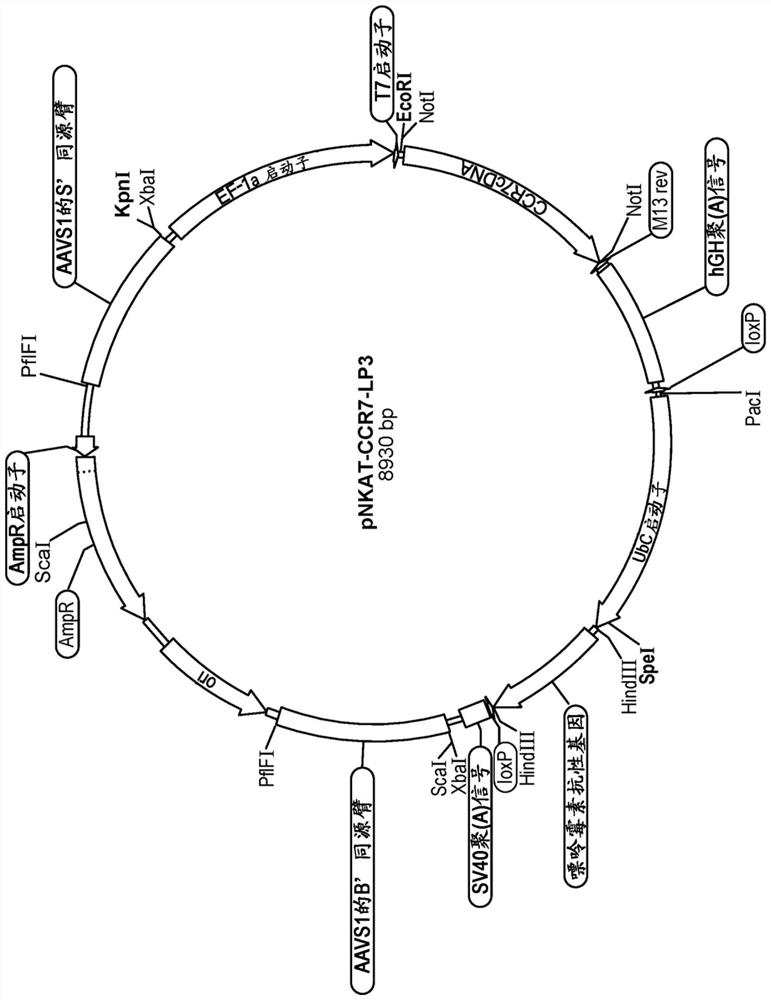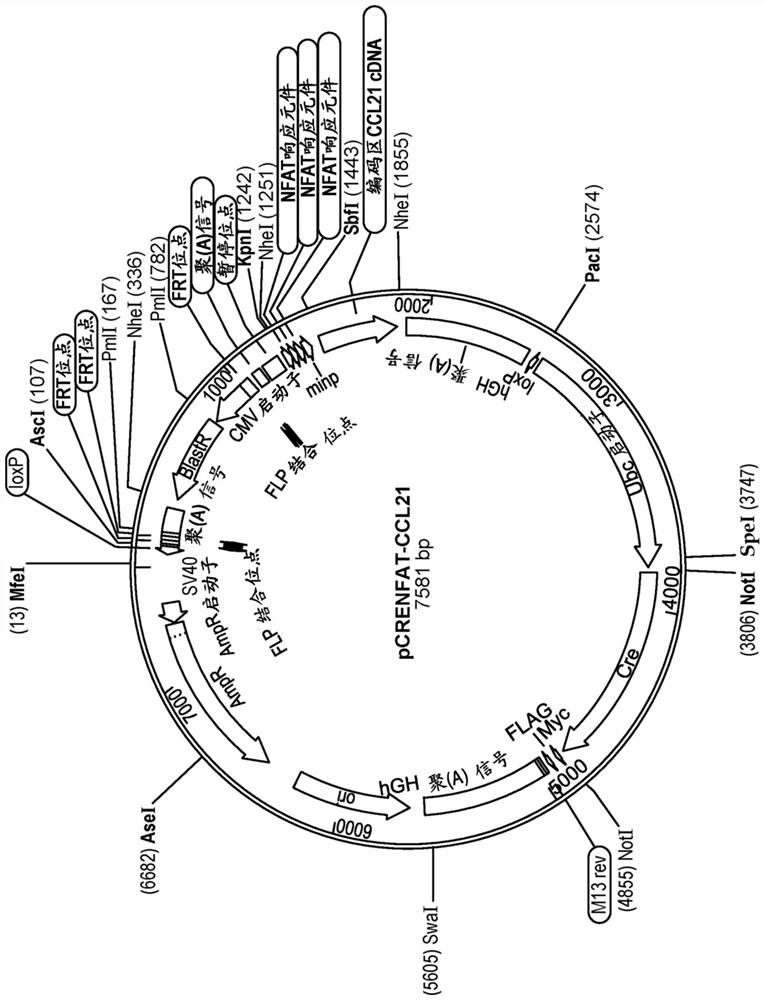Chemokine responsive activated natural killer cells with secondary homing activation for verified targets
A technology of chemokine receptors and cells, applied in the direction of chemokines, cytokines/lymphokines/interferon receptors, animal cells, etc.
- Summary
- Abstract
- Description
- Claims
- Application Information
AI Technical Summary
Problems solved by technology
Method used
Image
Examples
Embodiment 1
[0070] Example 1. Modified NK cell lines expressing CCR7
[0071] The pNKAT-CCR7-LP3 plasmid ( figure 1 ), followed by gel purification of the linearized plasmid and subsequent electroporation of the linearized plasmid on NK-92 cells using the NEON transfection system (Thermo Fisher Scientific, Waltham, MA) to produce modified NK-92 cells. After 1 week of puromycin selection, the resulting polyclonal populations were tested for CCR7 expression and tested by expression in X-Vivo supplemented with 5% human serum and IL-2. TM Monoclonal cell lines were obtained by serial dilution in culture medium (Lonza, Basel, Switzerland). Improved selection was observed with the addition of 25% conditioned media (sterile filtered supernatant from polyclonal populations). Modified NK-92 cells contain the EF1α promoter all wrapped in homology arms targeting the AAVS1 locus, the CCR7 gene with a poly-A tail, and the loxP-flanked puromycin resistance gene driven by the ubiquitin promoter ( SEQ...
Embodiment 2
[0078] Example 2. Generation of NFAT-responsive constructs for controlled expression of CCL21
[0079] To identify NFAT-responsive elements, a cell line stably expressing an NFAT-based luciferase expression cassette (NR2.2) was generated by electroporation of the linearized construct into Nk-92 cells containing the terminator region, followed by three NFAT-responsive elements (SEQ ID NO:4) and a minimal promoter (SEQ ID NO:5), which thus drive the production of firefly luciferase in the presence of activated NAFT. Subpopulations of these cells were also subsequently electroporated with mRNA containing anti-CD19 CAR (an antigen present on Sup-B15 cells that is otherwise resistant to killing by NK-92 cells). These cells are indicated as ENR2.2 in the left panel. Cells were then plated in triplicate in the absence or presence of target cells and incubated for periods of 2.5 hours to 24 hours. At the end of the incubation period, step 1 reagents from the Promega DualGlo system w...
Embodiment 3
[0080] Example 3. Modified NK cells expressing CCR7 and CCL21.
[0081] The pCRENFAT-CCL21 plasmid was incorporated into CCR7-containing NK-92 cells in a recombinase-mediated cassette exchange using the LoxP site embedded in the pNFAT-CCR7-LP3 construct. Following electroporation of a circular plasmid (pCRENFAT-CCL21), Cre recombinase was transiently expressed, mediating the exchange of the old selection cassette by the new LoxP flanking cassette. Blasticidin selection was used to facilitate the incorporation of new cassettes, and monoclonal cell lines were subcloned from the resulting population in the same manner as previously described in Example 1 to obtain modified NK- 92 cells.
[0082] To evaluate modified NK-92 cells expressing CCR7 and CCL21, unstained modified NK-92 cells were co-cultured with cells known to cause NFAT activation (K562 or other cell lines) in the lower well of a Boyden chamber, and stained The modified NK-92 cells were placed in the upper chamber. ...
PUM
 Login to View More
Login to View More Abstract
Description
Claims
Application Information
 Login to View More
Login to View More - R&D Engineer
- R&D Manager
- IP Professional
- Industry Leading Data Capabilities
- Powerful AI technology
- Patent DNA Extraction
Browse by: Latest US Patents, China's latest patents, Technical Efficacy Thesaurus, Application Domain, Technology Topic, Popular Technical Reports.
© 2024 PatSnap. All rights reserved.Legal|Privacy policy|Modern Slavery Act Transparency Statement|Sitemap|About US| Contact US: help@patsnap.com










